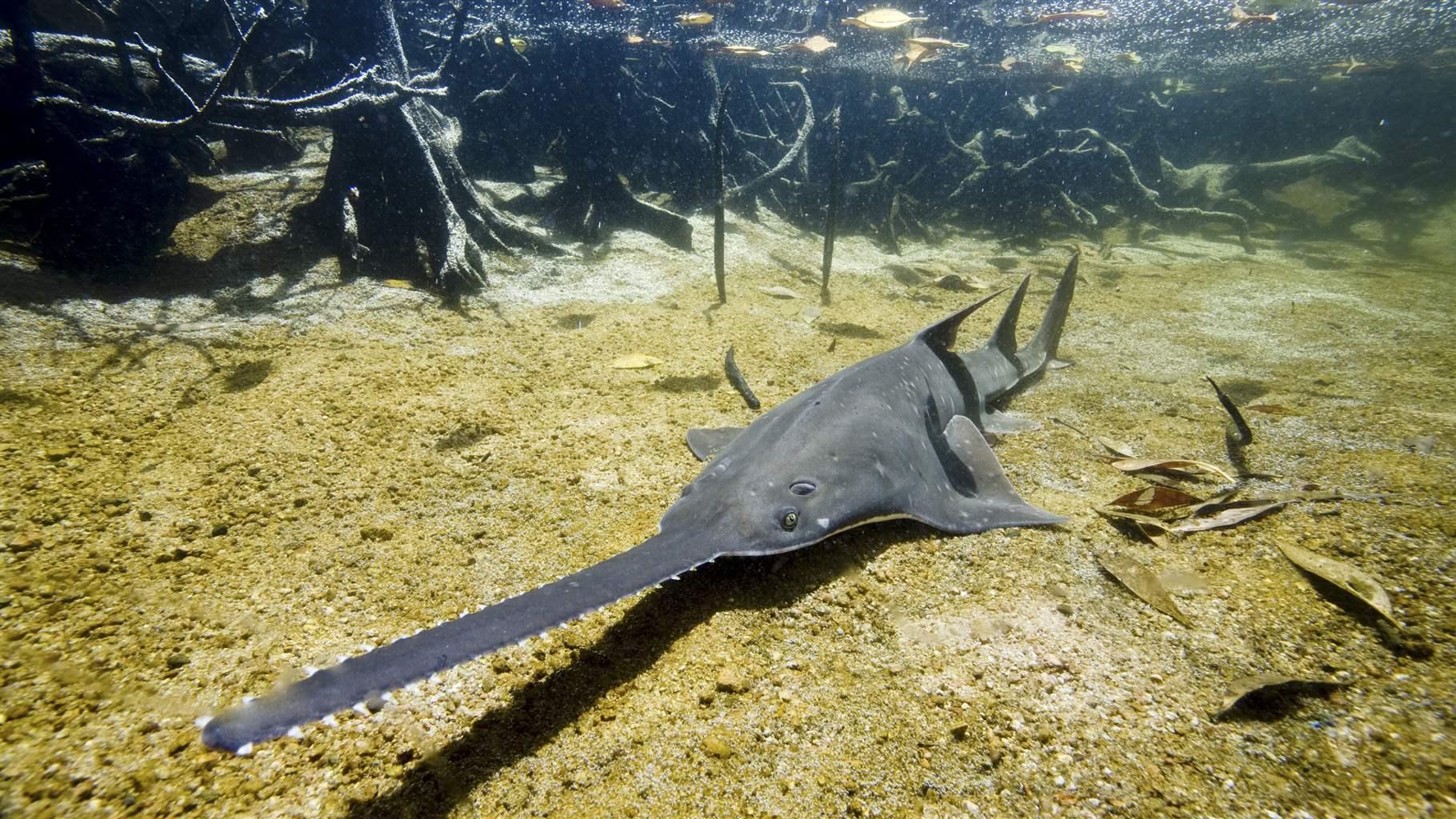Seabed Mining Ban in Australia’s Northern Territory Is a Win for Marine Life, Fishing and Culture
Government should now address other threats to region’s vulnerable wildlife and communities

Australia’s Northern Territory has incredibly healthy tropical coasts and seas—a dazzling mosaic of seagrass meadows, coral reefs, mangrove forests, estuaries and vast intertidal flats that sustain an array of wildlife along with Indigenous and other communities. The region is home to six of the world’s seven sea turtle species, migrating whales and snubfin dolphins, as well as several vulnerable species such as dugongs and sawfish.
These coastal environments contribute AU$2 billion to the local economy each year, supporting more than 6,300 jobs in education, Indigenous industries such as Indigenous ranger programs and cultural tourism, and recreational fishing and tourism while helping to reduce net emissions by sequestering and storing so-called blue carbon in coastal wetlands and other habitats.
Recently this wild, diverse and unique region won relief from a significant and longstanding threat: seabed mining, a growing trend around the world in which companies seek to extract minerals, gas and other resources from beds both in coastal waters and on the high seas.
In August 2021, the Northern Territory government formalised the permanent ban on seabed mining across the Territory. This ban came about after years of work by conservation groups including The Pew Charitable Trusts and the Australian Marine Conservation Society, in collaboration with Traditional Owners, commercial and recreational fishers, tourism operators, scientists and local communities.
Similar to open-cut or strip mining on land, seabed mining involves dredging or digging up areas of the sea floor to extract minerals. It is different from oil and petroleum mining in that it has a much wider footprint on the surface of the seabed. Rather than extracting liquid or gas from a hole punched in the sea floor, it involves removing broad areas of the floor—or even seamounts—from which the desired minerals are then extracted.
The practice often results in the removal or destruction of corals, other marine life and habitat, including places where commercially and recreationally important species feed and breed. The process also stirs up massive sediment clouds, some capable of traveling long distances, which can smother or otherwise negatively affect marine life, including plankton and fish.
Commercial interest in offshore mineral exploration in the Northern Territory surged from 2006 to 2011. During this time, companies applied for exploration and mining licences for highly valued environments such as Fog Bay, Anson Bay and Hyland Bay, Galiwin’ku (Elcho Island) and the Wessel Islands, Blue Mud Bay, Groote Eylandt and Limmen Bight. That sparked vocal opposition from numerous communities that were concerned about ecological, cultural, social and economic impacts. The Northern Territory Government responded initially by announcing a three-year moratorium on seabed mining in March 2012. This moratorium was twice extended under two different Territory governments, setting the stage for the eventual permanent ban in August.
The Northern Territory hosts some of the last intact tropical coastal and marine habitats in the world, many of which are of national and international significance. The seabed mining ban is welcome news, but these environments still face growing threats from climate change, coastal development, agricultural runoff, dams and water extraction in rivers, overfishing and pollution. These multiple pressures interact in complex ways, generating effects that are greater, and much more difficult to predict, than a simple summation of individual impacts.
More than 150 migratory and marine species that have been identified as threatened under Territory and Australian laws. These include coastal dolphins, sea snakes, migratory shorebirds and sawfish. Already under pressure, some marine animals may have reached their tolerance limits.
Healthy coasts, rivers and marine life are central to the Northern Territory way of life, its economic success and its culture. They underpin two of the state’s most important economic and cultural pursuits: recreational fishing and tourism, which rely on the preservation of intact and unpolluted marine and coastal environments.
It is now up to the Northern Territory Government to implement further policies to protect these unique and vulnerable coastal habitats. Key to this are community-specific solutions, such as ‘Sea Country’ Indigenous Protected Areas and funding for Indigenous Ranger programs and new marine parks that deliver tourism jobs. This approach must also protect the tropical rivers that feed the coastal environment—and sustain regional economies.
The permanent ban on seabed mining will provide enduring protection for the Northern Territory coasts and safeguard fishing, traditional ways of life and regional economies. It also sends a strong message that the Northern Territory Government is willing to stand up to corporate interests that threaten the future of the Territory’s most valuable assets: its coastal environments and the communities that rely on them. The onus is now on other jurisdictions around Australia, and the rest of the world, to follow this example, and move to protect vulnerable marine ecosystems from this devastating industry.
Michelle Grady is director of The Pew Charitable Trusts’ Outback to Oceans Australia program, and Christabel Mitchell leads Pew’s work on marine conversation in Australia.







